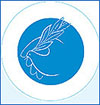 |
|
 |
 |
|
|
When Food Becomes An Enemy

|
Madhavi
Trivedi explains the triggers and treatment of food
allergies
IMAGINE what it
would be like if eating a handful of peanuts or drinking a glass of milk left
you vomiting, gasping for breath or furiously itching. Food allergies and food
intolerances affect nearly everyone at some point as people often have
unpleasant reactions to something they eat.
Food
Allergy
In a true food allergy,
the body's immune system recognises a reaction-provoking substance - an allergen
in the food; usually a protein - as foreign and produces antibodies to halt the
'invasion'. As the battle rages, symptoms appear throughout the body.
Allergic
Reactions
Allergic reactions to
food allergens typically begin within minutes to a few hours after the eating of
the offending food. The frequency and severity of symptoms vary from one person
to another. Mildly allergic individuals may only suffer a running nose with
sneezing, while highly allergic persons may experience severe reactions, such as
asthma or swelling of the tongue, lips or throat.
Common sites and symptoms of food
allergy:
Mouth (tingling;
swelling of the lips, tongue or throat; itching
lips)
Digestive tract (nausea;
abdominal cramps; vomiting; diarrhoea)
Skin (hives; rashes or eczema)
Airways (cough; wheezing; itchy,
stuffy, runny nose and sneezing; asthma or breathing problems)
Anaphylaxis, a severe allergic
reaction (drop in blood pressure and loss of consciousness) may be life
threatening.
What
Causes An Allergic Reaction?
The
immune system produces increased amounts of immunoglobulin E antibody, or IgE,
in some people. When these antibodies battle with food allergens, histamine and
other chemicals are released as part of the body's reaction to these substances.
These chemicals can cause blood vessels to widen, muscles to contract and some
skin areas to become red, itchy and swollen.
Most
Likely Suspects
In children:
Eggs, milk, peanuts, soya and wheat. Children typically outgrow their allergies
to milk, egg, soya and wheat, while allergies to peanuts, fish and shrimp are
usually not outgrown.
In
Adults: Shrimp, lobster, crab, and other shellfish; peanuts, walnuts and other
nuts; fish; and eggs. Adults usually do not lose their allergies.
Keep in mind that if you
are allergic to a particular food, you might be allergic to related foods. For
example, a person allergic to shrimp may not tolerate crab and lobster.
Likewise, a person allergic to peanuts may not tolerate one or two other members
of the legume family such as soya, peas or certain beans.
What
Makes One Prone To
Allergies?
Heredity is one of the
prime reasons. If both your parents have allergies, you have approximately a 75
per cent chance of being allergic. If one parent is allergic, or you have
relatives on one side with allergies, you have a 30 to 40 per cent chance of
developing some form of allergy. If neither parent has an apparent allergy, the
chance is 10 to 15 per cent. Although food allergy occurs most often in infants
and children, it can appear at any age and can be caused by foods that have been
previously eaten without any problems.
Determining
The Culprit
Some people can
determine what foods cause allergic reactions in them. But, when the symptoms
occur several hours after intake of food, it becomes difficult to verify the
cause. An allergist/immunologist is the best-qualified professional to diagnose
food allergy.
Treatment
Avoid
the food. The best way to treat food allergy is to avoid the specific foods that
trigger the allergy.
Ask
about ingredients. If you are prone to allergies, always enquire about
ingredients when eating at restaurants or others' homes.
Read food labels. And also
get familiar with technical or scientific names for foods. For example, milk may
be listed as casein (a milk protein), sodium caseinate or milk solids. Sometimes
wheat is listed as gluten. Similarly, egg white is frequently listed as
albumin.
Be prepared for
emergencies. Those who have experienced an anaphylactic reaction to a food must
carry and know how to use injectable epinephrine and antihistamines to treat
reactions due to accidental ingestion. People who are commonly around the
patient, should also know how to administer the injectable epinephrine. Those
with food allergies should also wear an identification bracelet that describes
the allergy. For proper diagnosis and treatment, make sure to get follow-up care
from an allergist/immunologist.
Food
Intolerance And Additive
Reactions
Food intolerance
reactions are usually caused by factors in the diet other than the proteins that
make up food allergens. As mentioned, one of the most common is lactose
intolerance. Symptoms can include nervousness after consuming caffeine in coffee
or soft drinks, headaches triggered by chemicals in cheese and chocolate, or
various adverse reactions to chemicals and preservatives added to food, called
food additives.
These
additives may cause adverse reactions in sensitive people. The most common food
additives that may cause reactions include benzoates, BHA and BHT, FD&C dyes
Yellow No 5 and Red No 3, monosodium glutamate (MSG), nitrates/ nitrites and
sulfites. However, true allergic reactions to food additives are very rare.
The best way to handle food
additive sensitivity is to know which foods contain certain additives, and to
avoid the additives that cause problems for you.
Madhavi Trivedi is a Nutritionist
and Healthcare Consultant
|
|
 |
|
|
|
| Don't wait for evolution. Get |
 |
with
|
 |
 COMMENTS ON THIS ARTICLE COMMENTS ON THIS ARTICLE |
 |
 No comment has been posted for this article yet. No comment has been posted for this article yet.
|
|
|
|
|
 |
|
Ponds Femina
Miss India 2005
|
|
Indiatimes
Woman
|
 Mahavir-Mahatma
Awards Oneness Forum
launched How to
join |
Indiatimes
Modelwatch  a aClick to view
more  |
|
|



